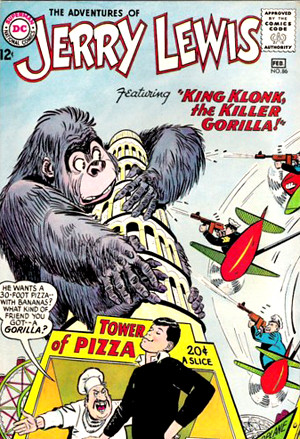It’s odd to read Susan Whiting, president and CEO of Nielsen Media Research, write about “Anytime Anywhere Media Measurement,” and not just because it closely mirrors the “Anytime, anywhere, from any device” positioning statement that we developed for the National Emergency Number Association’s Next Generation 911 System several years ago.
No, it’s mostly odd because the new Nielsen “everyone counts” concept doesn’t resonate with people who will watch Jericho Season 2, who once watched The Black Donnellys, or who once watched a half dozen other programs that have since been slashed for poor ratings.
“We’re not on the same channel. Isn’t that great! Well, maybe, if you’re particularly fond of revolutions. Remember when were all over the “dial?” Well, there is no dial. Digital took care of that. So we’re surfing with the remote. Not always. Sometimes we timeshift by watching what we want when we want.” — Susan Whiting
Sound familiar? The language reads like the scores of testimonials from Jericho fans ever since we noted Nielsen was feeling some fallout months ago (except the fans wrote better). Back then, it was these fans who learned for the first time that their show was going to be cancelled because the Nielsen system fails the most important criteria of a sample: it is not random in the statistical sense.
Simply put, the ratings game is a crapshoot. The sliver of a difference between keeping a show on the air today or not is so statically insignificant, sliced all the more thinly by targeting select demographics, and completely negating any audience that might watch shows in a group setting (bars, college dorms, etc.). And yet, the rating system is why we watch the Super Bowl in February (during sweeps, when the most viewers are surveyed), dictates advertising rates, and is the fuel for most entertainment columns.
Not to worry, Nielsen says, it’ll have a whole new system by 2011. How well that will work is anybody’s guess. Sure, Nielsen has some good ideas, including its social network buzz network monitoring device “Hey! Nielsen,” which is currently being beta tested by employees.
But at some point, somebody still has to ask what do these numbers mean anyway? Some might live by them, but others are becoming less certain. For a long time, HBO completely ignored the numbers and produced award-winning heavily watched shows, and its message “It’s not TV, it’s HBO” really stuck.
Nowadays, it doesn't seem that way, which is why HBO might find its roots again. Increasingly, HBO is measuring its success both by how many viewers a show accumulates over multiple plays and by how well a show performs with its on-demand service, where viewers order specific episodes. We hope others follow suit with new measure methods, because while we maintain Nielsen does have some relevance, shifting the decision-making process might save us from more paint-by-number programming and nuttier Nielsen concepts.
For example, Nielsen recently released that local people readers (non-sweeps tracking) were employed in the top 10 television markets, which supposedly accounts for 30 percent of all television households. (What’s missed is the tiny number of households tracked in those markets). In other words, Atlanta,
Boston, Chicago, Dallas, Detroit, Los Angeles, New York, Philadelphia, San Francisco, and Washington D.C. have a little more weight than the rest of the country.
This is especially significant to Jericho fans because looking back over our own analytics during the peak of the cancellation protest, Jericho fans seem grossly underrepresented in these markets when compared to the greater United States (to say nothing of Canada and other countries). When you think about the show, it almost makes sense. It doesn’t seem like an urban powerhouse as much as it captures the rest of the nation’s imagination.
But what does that mean? It means what it has always meant. Attempting to paint by numbers to give shows a leg up in the ratings (or even critical review) is fraught with peril. In the months and years ahead, especially as broadcast-Internet convergence moves forward, networks will be better served by creating and marketing the content that they believe in, which is how some cable players like HBO and even some network shows have succeeded.
If you create a great show and support it, the numbers will follow — with viewers, DVD sales, and Internet engagement. Anything else is just guesswork. Just to illustrate the point, someone looking at Southwest Airlines on Alexa might notice it is down 11 percent in reach over the last three months. Do those numbers mean anything? Not if I count $150 million in ticket sales attributed to the widget that is part of its social media marketing program. Go figure.

No, it’s mostly odd because the new Nielsen “everyone counts” concept doesn’t resonate with people who will watch Jericho Season 2, who once watched The Black Donnellys, or who once watched a half dozen other programs that have since been slashed for poor ratings.
“We’re not on the same channel. Isn’t that great! Well, maybe, if you’re particularly fond of revolutions. Remember when were all over the “dial?” Well, there is no dial. Digital took care of that. So we’re surfing with the remote. Not always. Sometimes we timeshift by watching what we want when we want.” — Susan Whiting
Sound familiar? The language reads like the scores of testimonials from Jericho fans ever since we noted Nielsen was feeling some fallout months ago (except the fans wrote better). Back then, it was these fans who learned for the first time that their show was going to be cancelled because the Nielsen system fails the most important criteria of a sample: it is not random in the statistical sense.
Simply put, the ratings game is a crapshoot. The sliver of a difference between keeping a show on the air today or not is so statically insignificant, sliced all the more thinly by targeting select demographics, and completely negating any audience that might watch shows in a group setting (bars, college dorms, etc.). And yet, the rating system is why we watch the Super Bowl in February (during sweeps, when the most viewers are surveyed), dictates advertising rates, and is the fuel for most entertainment columns.
Not to worry, Nielsen says, it’ll have a whole new system by 2011. How well that will work is anybody’s guess. Sure, Nielsen has some good ideas, including its social network buzz network monitoring device “Hey! Nielsen,” which is currently being beta tested by employees.
But at some point, somebody still has to ask what do these numbers mean anyway? Some might live by them, but others are becoming less certain. For a long time, HBO completely ignored the numbers and produced award-winning heavily watched shows, and its message “It’s not TV, it’s HBO” really stuck.
Nowadays, it doesn't seem that way, which is why HBO might find its roots again. Increasingly, HBO is measuring its success both by how many viewers a show accumulates over multiple plays and by how well a show performs with its on-demand service, where viewers order specific episodes. We hope others follow suit with new measure methods, because while we maintain Nielsen does have some relevance, shifting the decision-making process might save us from more paint-by-number programming and nuttier Nielsen concepts.
For example, Nielsen recently released that local people readers (non-sweeps tracking) were employed in the top 10 television markets, which supposedly accounts for 30 percent of all television households. (What’s missed is the tiny number of households tracked in those markets). In other words, Atlanta,
Boston, Chicago, Dallas, Detroit, Los Angeles, New York, Philadelphia, San Francisco, and Washington D.C. have a little more weight than the rest of the country.
This is especially significant to Jericho fans because looking back over our own analytics during the peak of the cancellation protest, Jericho fans seem grossly underrepresented in these markets when compared to the greater United States (to say nothing of Canada and other countries). When you think about the show, it almost makes sense. It doesn’t seem like an urban powerhouse as much as it captures the rest of the nation’s imagination.
But what does that mean? It means what it has always meant. Attempting to paint by numbers to give shows a leg up in the ratings (or even critical review) is fraught with peril. In the months and years ahead, especially as broadcast-Internet convergence moves forward, networks will be better served by creating and marketing the content that they believe in, which is how some cable players like HBO and even some network shows have succeeded.
If you create a great show and support it, the numbers will follow — with viewers, DVD sales, and Internet engagement. Anything else is just guesswork. Just to illustrate the point, someone looking at Southwest Airlines on Alexa might notice it is down 11 percent in reach over the last three months. Do those numbers mean anything? Not if I count $150 million in ticket sales attributed to the widget that is part of its social media marketing program. Go figure.































